Data Structures and Algorithms
- Introduction to Data Structures and Algorithms
- Time and Space Complexity Analysis
- Big-O, Big-Theta, and Big-Omega Notations
- Recursion and Backtracking
- Divide and Conquer Algorithm
- Dynamic Programming: Memoization vs. Tabulation
- Greedy Algorithms and Their Use Cases
- Understanding Arrays: Types and Operations
- Linear Search vs. Binary Search
- Sorting Algorithms: Bubble, Insertion, Selection, and Merge Sort
- QuickSort: Explanation and Implementation
- Heap Sort and Its Applications
- Counting Sort, Radix Sort, and Bucket Sort
- Hashing Techniques: Hash Tables and Collisions
- Open Addressing vs. Separate Chaining in Hashing
- DSA Questions for Beginners
- Advanced DSA Questions for Competitive Programming
- Top 10 DSA Questions to Crack Your Next Coding Test
- Top 50 DSA Questions Every Programmer Should Practice
- Top Atlassian DSA Interview Questions
- Top Amazon DSA Interview Questions
- Top Microsoft DSA Interview Questions
- Top Meta (Facebook) DSA Interview Questions
- Netflix DSA Interview Questions and Preparation Guide
- Top 20 DSA Interview Questions You Need to Know
- Top Uber DSA Interview Questions and Solutions
- Google DSA Interview Questions and How to Prepare
- Airbnb DSA Interview Questions and How to Solve Them
- Mobile App DSA Interview Questions and Solutions
DSA Interview Questions
- DSA Questions for Beginners
- Advanced DSA Questions for Competitive Programming
- Top 10 DSA Questions to Crack Your Next Coding Test
- Top 50 DSA Questions Every Programmer Should Practice
- Top Atlassian DSA Interview Questions
- Top Amazon DSA Interview Questions
- Top Microsoft DSA Interview Questions
- Top Meta (Facebook) DSA Interview Questions
- Netflix DSA Interview Questions and Preparation Guide
- Top 20 DSA Interview Questions You Need to Know
- Top Uber DSA Interview Questions and Solutions
- Google DSA Interview Questions and How to Prepare
- Airbnb DSA Interview Questions and How to Solve Them
- Mobile App DSA Interview Questions and Solutions
Data Structures and Algorithms
- Introduction to Data Structures and Algorithms
- Time and Space Complexity Analysis
- Big-O, Big-Theta, and Big-Omega Notations
- Recursion and Backtracking
- Divide and Conquer Algorithm
- Dynamic Programming: Memoization vs. Tabulation
- Greedy Algorithms and Their Use Cases
- Understanding Arrays: Types and Operations
- Linear Search vs. Binary Search
- Sorting Algorithms: Bubble, Insertion, Selection, and Merge Sort
- QuickSort: Explanation and Implementation
- Heap Sort and Its Applications
- Counting Sort, Radix Sort, and Bucket Sort
- Hashing Techniques: Hash Tables and Collisions
- Open Addressing vs. Separate Chaining in Hashing
- DSA Questions for Beginners
- Advanced DSA Questions for Competitive Programming
- Top 10 DSA Questions to Crack Your Next Coding Test
- Top 50 DSA Questions Every Programmer Should Practice
- Top Atlassian DSA Interview Questions
- Top Amazon DSA Interview Questions
- Top Microsoft DSA Interview Questions
- Top Meta (Facebook) DSA Interview Questions
- Netflix DSA Interview Questions and Preparation Guide
- Top 20 DSA Interview Questions You Need to Know
- Top Uber DSA Interview Questions and Solutions
- Google DSA Interview Questions and How to Prepare
- Airbnb DSA Interview Questions and How to Solve Them
- Mobile App DSA Interview Questions and Solutions
DSA Interview Questions
- DSA Questions for Beginners
- Advanced DSA Questions for Competitive Programming
- Top 10 DSA Questions to Crack Your Next Coding Test
- Top 50 DSA Questions Every Programmer Should Practice
- Top Atlassian DSA Interview Questions
- Top Amazon DSA Interview Questions
- Top Microsoft DSA Interview Questions
- Top Meta (Facebook) DSA Interview Questions
- Netflix DSA Interview Questions and Preparation Guide
- Top 20 DSA Interview Questions You Need to Know
- Top Uber DSA Interview Questions and Solutions
- Google DSA Interview Questions and How to Prepare
- Airbnb DSA Interview Questions and How to Solve Them
- Mobile App DSA Interview Questions and Solutions
Low-Level Design (LLD) vs High-Level Design (HLD): Key Differences for SDEs
Hey there, aspiring and seasoned software development engineers (SDEs)! If you’ve ever found yourself tangled in the web of system design concepts, wondering how to bridge the gap between big-picture architecture and nitty-gritty implementation details, you’re not alone. Understanding the nuances between Low-Level Design (LLD) and High-Level Design (HLD) is crucial for building robust, scalable software systems. Whether you’re prepping for a tech interview or tackling a real-world project, mastering these can elevate your engineering game. To stay ahead with free resources and the latest updates on system design courses, sign up for our newsletter today—it’s your gateway to exclusive tips and materials that can supercharge your learning journey.
In this comprehensive guide, we’ll dive deep into what HLD and LLD entail, their key differences, best practices, common pitfalls, and real-world applications. Backed by insights from industry experts and reliable sources, this post aims to provide actionable knowledge that goes beyond the basics. By the end, you’ll have a clear roadmap to apply these concepts effectively in your work or interviews. Let’s get started!
Understanding High-Level Design (HLD)
High-Level Design is often the starting point in any software project, acting as the architectural blueprint that outlines the system’s overall structure. It’s like sketching the layout of a city before building individual houses—focusing on the roads, zones, and flow without worrying about the paint colors yet.
Definition and Purpose
HLD provides a bird’s-eye view of the software system, defining major components, their interactions, and how they align with business requirements. According to software architecture principles, HLD is created early in the development lifecycle by solution architects to ensure the system meets high-level goals like scalability, reliability, and performance. Its primary purpose is to facilitate communication among stakeholders, including developers, project managers, and clients, while identifying potential risks early. Without a solid HLD, projects can spiral into chaos, leading to costly rework down the line.
In essence, HLD translates Software Requirement Specifications (SRS) into a conceptual model. It addresses “what” the system should do at a macro level, ensuring alignment with user needs and technical constraints. For SDEs, this phase is vital for understanding the bigger picture before diving into code.

Key Components
A typical HLD includes several core elements:
- System Architecture: This outlines the high-level structure, such as whether to use a monolithic, microservices, or serverless approach.
- Modules and Interactions: Identification of major modules (e.g., user authentication, data processing) and how they communicate via APIs or messaging queues.
- Data Flow and Databases: High-level diagrams showing data movement, storage choices (e.g., relational vs. NoSQL), and basic schemas.
- Interfaces and User Experience: Descriptions of user interfaces, external integrations, and performance specs like response times.
- Deployment Considerations: Initial thoughts on hosting, such as cloud providers (e.g., AWS) and scaling strategies.
These components ensure the design is feasible and sets the stage for detailed implementation.
Tools and Techniques
Common tools for HLD include diagramming software like Lucidchart, Draw.io, or Microsoft Visio for creating UML diagrams (e.g., component and deployment diagrams). Techniques involve stakeholder workshops, requirement analysis, and prototyping to validate assumptions. Best practices emphasize simplicity and iteration—start broad and refine based on feedback.
Understanding Low-Level Design (LLD)
Once the high-level blueprint is in place, LLD zooms in on the details, turning abstract components into concrete, code-ready specifications. Think of it as the detailed floor plans for those houses in our city analogy, complete with wiring and plumbing.
Definition and Purpose
LLD specifies the intricate details of each system component, including algorithms, data structures, classes, and methods. It’s developed by designers and developers after HLD approval and serves as a direct guide for coding. The purpose is to ensure efficient, maintainable implementation while addressing “how” the system functions at a micro level. For SDEs, LLD is where object-oriented principles shine, helping to create modular code that’s easy to test and scale.
This phase minimizes ambiguities, reducing bugs during development. It’s particularly important in complex systems where poor LLD can lead to performance bottlenecks or integration issues.
Key Components
LLD breaks down into:
- Class and Object Design: Detailed class diagrams, attributes, methods, and relationships using principles like SOLID (Single Responsibility, Open-Closed, etc.).
- Algorithms and Data Structures: Choices like hash maps for quick lookups or sorting algorithms for data processing, optimized for efficiency.
- Interfaces and Error Handling: Specific API endpoints, input/output formats, and mechanisms for handling exceptions.
- Database Schemas: Detailed table structures, indexes, and queries.
- Unit Test Plans: Outlines for testing individual components.
These elements make LLD a bridge between design and development.
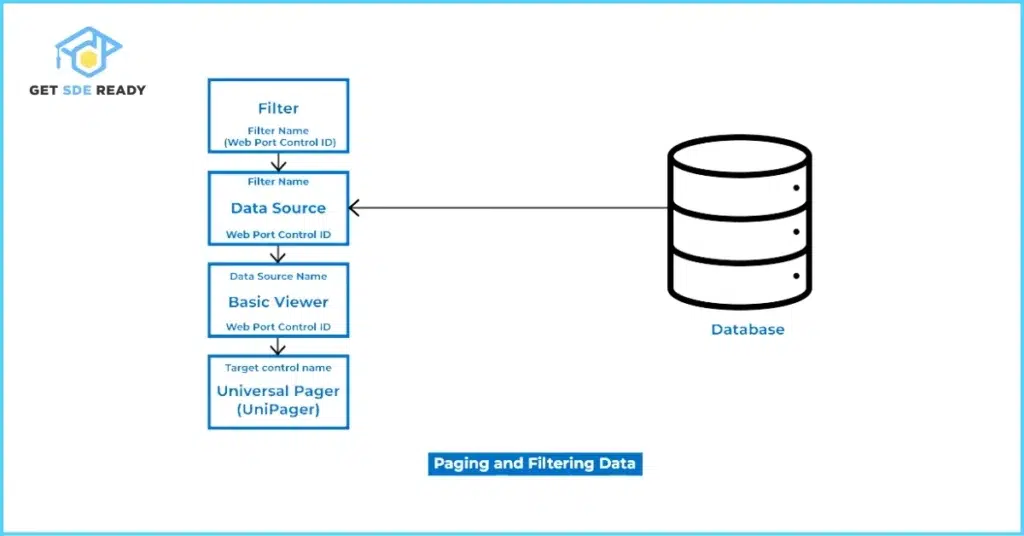
Tools and Techniques
Tools for LLD often include IDEs like IntelliJ or VS Code for code modeling, alongside UML tools for sequence and activity diagrams. Techniques involve applying design patterns (e.g., Singleton for resource management) and code reviews to ensure adherence to standards. Focus on modularity and reusability to make future changes seamless.
Key Differences Between HLD and LLD
While HLD and LLD are interconnected, their scopes and focuses differ significantly. Here’s a breakdown in a clear table for easy scanning:
Aspect | High-Level Design (HLD) | Low-Level Design (LLD) |
Focus | Overall architecture and components | Detailed implementation of modules |
Level of Detail | Abstract, high-level overview | Concrete, code-level specifics |
Created By | Solution architects | Designers and developers |
Input | Software Requirement Specification (SRS) | Reviewed HLD |
Output | System diagrams, functional specs | Class diagrams, algorithms, test plans |
Purpose | Align with business goals, identify risks | Guide coding, ensure efficiency |
Tools | Diagramming software (e.g., Lucidchart) | IDEs and UML tools (e.g., IntelliJ) |
Timing in SDLC | Early design phase | Post-HLD, before coding |
These differences highlight how HLD sets the vision, while LLD executes it precisely. As expert John Ousterhout notes in “A Philosophy of Software Design,” “Your job as a developer is not just to create code that you can work with easily, but to create code that others can also work with easily”—a principle that underscores the collaborative value of both designs.
The Role of HLD and LLD in the Software Development Lifecycle
In the Software Development Lifecycle (SDLC), HLD and LLD are pivotal during the design phase, following requirements gathering and preceding implementation. HLD ensures the system is scalable and meets non-functional requirements like availability, while LLD guarantees modular, testable code.
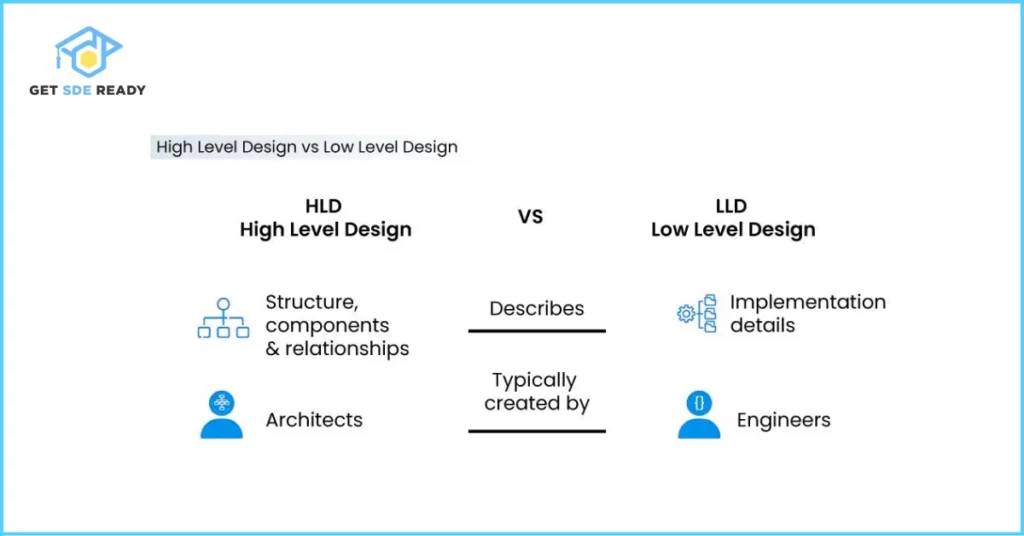
Their importance is echoed by industry surveys: System design interviews, which often cover HLD and LLD, are a staple in over 80% of senior SDE roles at tech giants like FAANG, according to hiring data from platforms like Design Gurus. Together, they reduce development time by up to 30% by catching issues early, as per software engineering best practices. For SDEs, mastering these phases fosters better collaboration and leads to more resilient systems.
Best Practices for Effective HLD and LLD
To nail HLD and LLD, follow these actionable tips:
- For HLD: Gather clear requirements, keep designs simple (KISS principle), plan for scalability, and document thoroughly with diagrams. Involve stakeholders early for buy-in.
- For LLD: Adhere to SOLID principles, use design patterns judiciously, write clean code, and incorporate unit tests. Profile performance before optimizing to avoid premature tweaks.
Expert advice from GeeksforGeeks emphasizes iterating on designs to adapt to changes. If you’re honing these skills, consider our comprehensive course on mastering DSA, web dev, and system design for hands-on practice.
Common Mistakes to Avoid in System Design
Many SDEs falter by jumping into LLD without a solid HLD, leading to misaligned architectures. Other pitfalls include over-engineering (adding unnecessary complexity), neglecting scalability, ignoring error handling, and poor documentation. In interviews, failing to clarify requirements can tank your performance—always ask questions first. Avoid these by prioritizing simplicity and validation at each step.
Real-World Examples of HLD and LLD
Let’s apply this to an e-commerce platform, a common system design scenario.
- HLD Example: The system includes components like User Service for authentication, Product Catalog for inventory, Order Service for transactions, Payment Gateway, and Recommendation Engine. Data flows from user browsing to order placement via APIs, using a microservices architecture on AWS for scalability.
- LLD Example: Focusing on the Order Service, define an Order class with attributes (ID, user ID, total) and methods (create, update). Use a relational database schema with tables for orders and items, employing algorithms like inventory locking for concurrency. Implement error handling for payment failures using try-catch blocks.
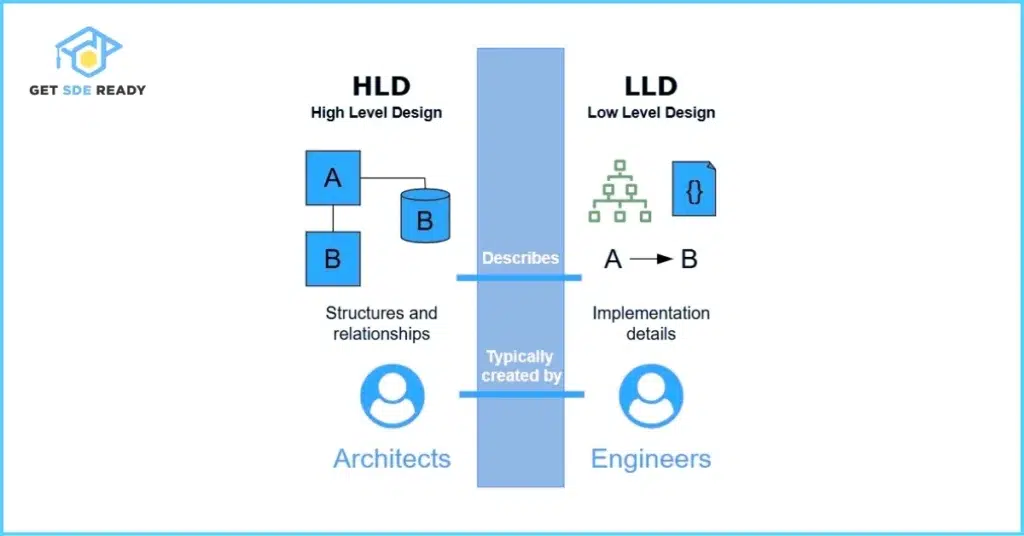
For a cab booking app like Uber, HLD might outline geolocation services and matching algorithms at a high level, while LLD details the matching logic with data structures like priority queues.
Preparing for System Design Interviews as an SDE
System design interviews test your ability to handle HLD and LLD under pressure, common for mid-to-senior roles. Practice by designing systems like URL shorteners or social feeds, focusing on trade-offs (e.g., consistency vs. availability). Resources like our DSA course can build foundational skills, while the web development course helps with full-stack integration. For a deep dive, check our master DSA, web dev, and system design program. If time is short, our crash course offers quick, targeted prep.
Remember, as Alan Kay said, “Simple things should be simple and complex things should be possible”—aim for balanced designs in your responses.
Conclusion
Wrapping up, HLD and LLD are the yin and yang of system design—HLD provides the vision, LLD the execution. For SDEs, grasping their differences empowers you to build better software and ace interviews. Apply these insights in your next project: Start with a strong HLD, refine through LLD, and iterate. Ready to level up? Explore our data science course for advanced analytics in designs, or dive into the crash course for immediate boosts. What’s your biggest system design challenge? Share in the comments—we’d love to hear!
FAQs
What is the main difference between HLD and LLD in system design?
HLD focuses on overall architecture and components, while LLD details specific modules, algorithms, and data structures for implementation.
Why is High-Level Design important for software engineers?
HLD ensures scalable, aligned systems by providing a roadmap, reducing risks, and facilitating stakeholder communication in the SDLC.
How does Low-Level Design improve code quality?
LLD promotes modularity using SOLID principles and design patterns, making code maintainable, testable, and efficient.
What tools are best for creating HLD and LLD diagrams?
Use Lucidchart or Draw.io for HLD architecture diagrams, and UML tools like PlantUML for LLD class and sequence diagrams.
How to prepare for HLD vs LLD questions in tech interviews?
Practice real-world scenarios, clarify requirements, discuss trade-offs, and study patterns—resources like DSA courses can help.
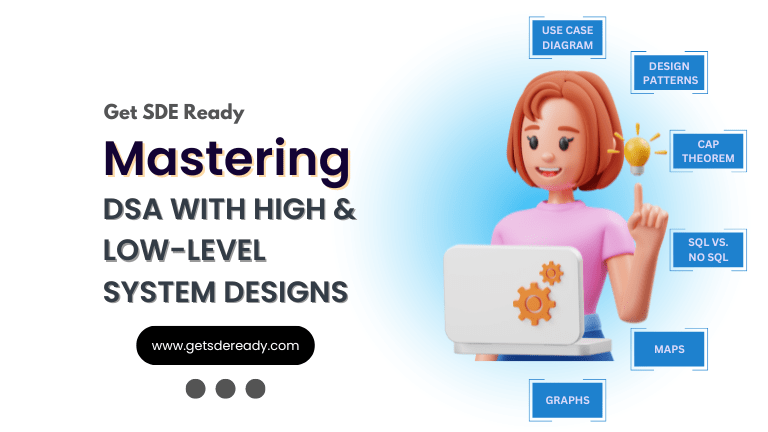
DSA, High & Low Level System Designs
- 85+ Live Classes & Recordings
- 24*7 Live Doubt Support
- 400+ DSA Practice Questions
- Comprehensive Notes
- HackerRank Tests & Quizzes
- Topic-wise Quizzes
- Case Studies
- Access to Global Peer Community
Buy for 60% OFF
₹25,000.00 ₹9,999.00
Accelerate your Path to a Product based Career
Boost your career or get hired at top product-based companies by joining our expertly crafted courses. Gain practical skills and real-world knowledge to help you succeed.
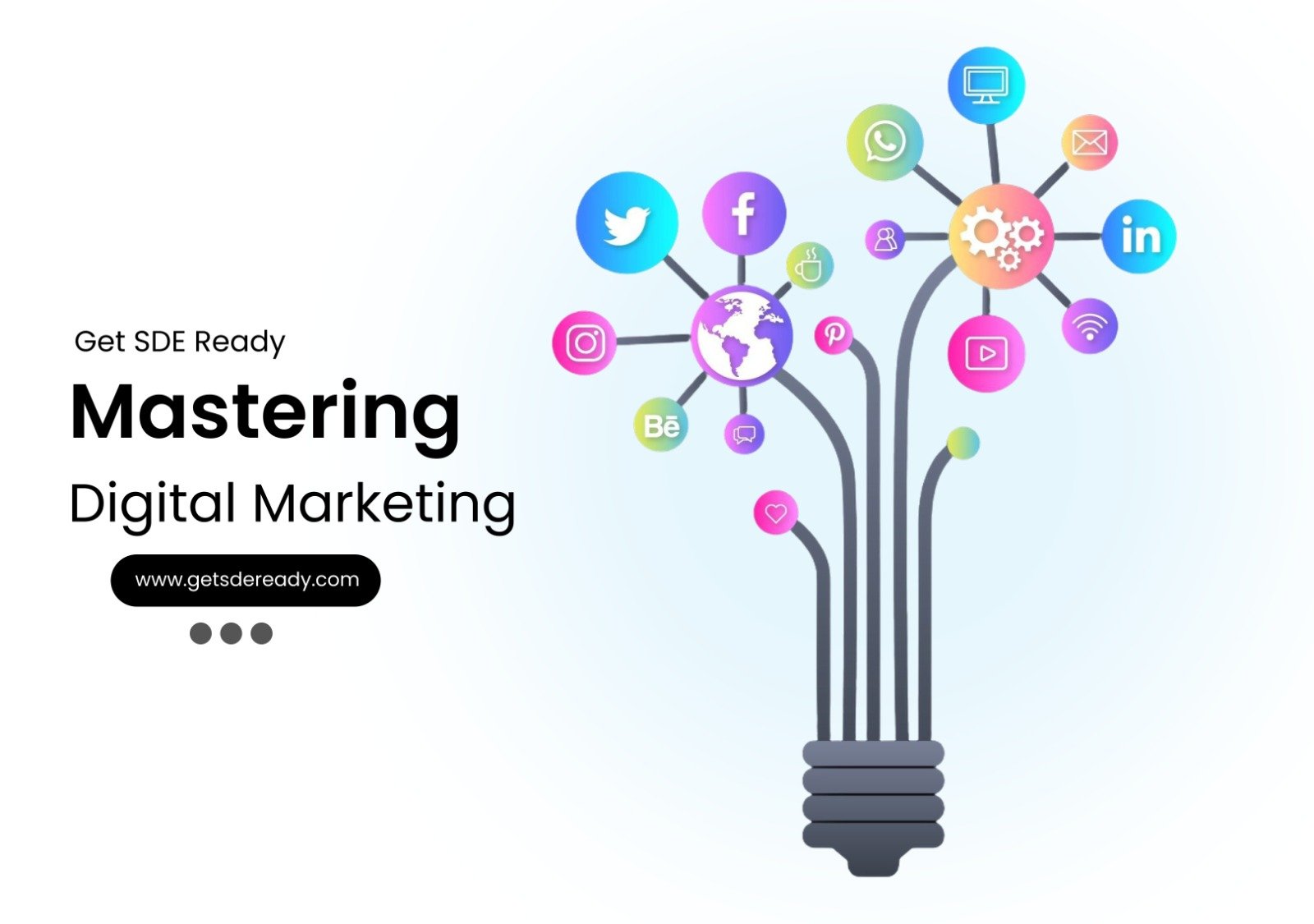
Digital Marketing
- 120+ Live Classes & Recordings
- 24*7 Live Doubt Support
- Hands-on Live Projects
- Comprehensive Notes
- Tests & Quizzes
- Real-world Tools & Technologies
- Interview Prep Material
- Placement Assistance
Buy for 50% OFF
₹10,000.00 ₹5,000.00

AI
- 20+ Live Classes & Recordings
- 24*7 Live Doubt Support
- 10+ Hands-on Live Projects
- Comprehensive Notes & Quizzes
- Real-world Tools & Technologies
- Access to Global Peer Community
- Interview Prep Material
- Placement Assistance
Buy for 57% OFF
₹9,999.00 ₹4,999.00
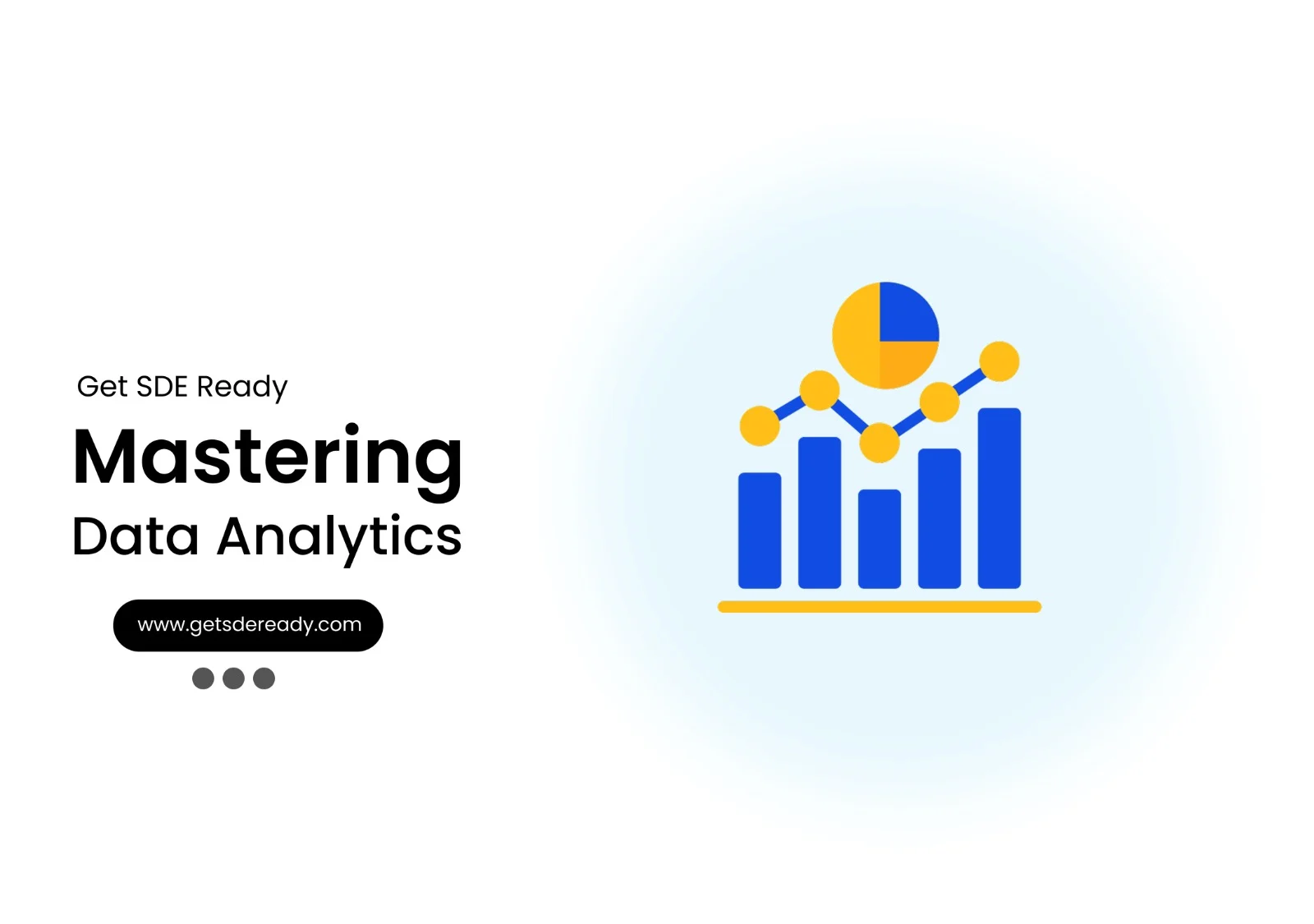
Data Analytics
- 60+ Live Classes & Recordings
- 24*7 Live Doubt Support
- Hands-on Live Projects
- Comprehensive Notes
- Real-world Tools & Technologies
- Access to Global Peer Community
- Interview Prep Material
- Placement Assistance
Buy for 50% OFF
₹9,999.00 ₹2,999.00
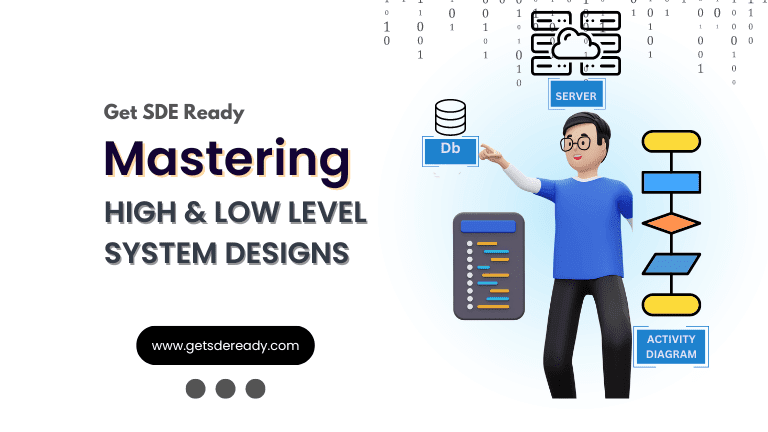
Low & High Level System Design
- 20+ Live Classes & Recordings
- 24*7 Live Doubt Support
- Case Studies
- Comprehensive Notes
- HackerRank Tests
- Topic-wise Quizzes
- Access to Global Peer Community
- Interview Prep Material
Buy for 65% OFF
₹20,000.00 ₹6,999.00
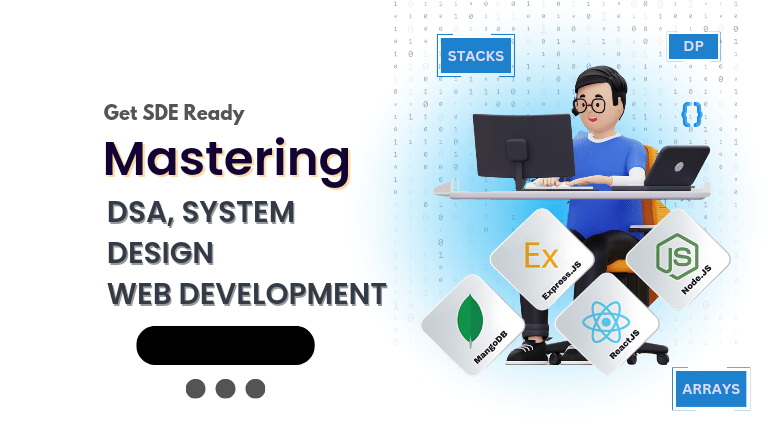
Fast-Track to Full Spectrum Software Engineering
- 120+ Live Classes & Recordings
- 24*7 Live Doubt Support
- 400+ DSA Practice Questions
- Comprehensive Notes
- HackerRank Tests & Quizzes
- 12+ live Projects & Deployments
- Case Studies
- Access to Global Peer Community
Buy for 57% OFF
₹35,000.00 ₹14,999.00

DSA, High & Low Level System Designs
- 85+ Live Classes & Recordings
- 24*7 Live Doubt Support
- 400+ DSA Practice Questions
- Comprehensive Notes
- HackerRank Tests & Quizzes
- Topic-wise Quizzes
- Case Studies
- Access to Global Peer Community
Buy for 60% OFF
₹25,000.00 ₹9,999.00
Reach Out Now
If you have any queries, please fill out this form. We will surely reach out to you.
Contact Email
Reach us at the following email address.
arun@getsdeready.com
Phone Number
You can reach us by phone as well.
+91-97737 28034
Our Location
Rohini, Sector-3, Delhi-110085